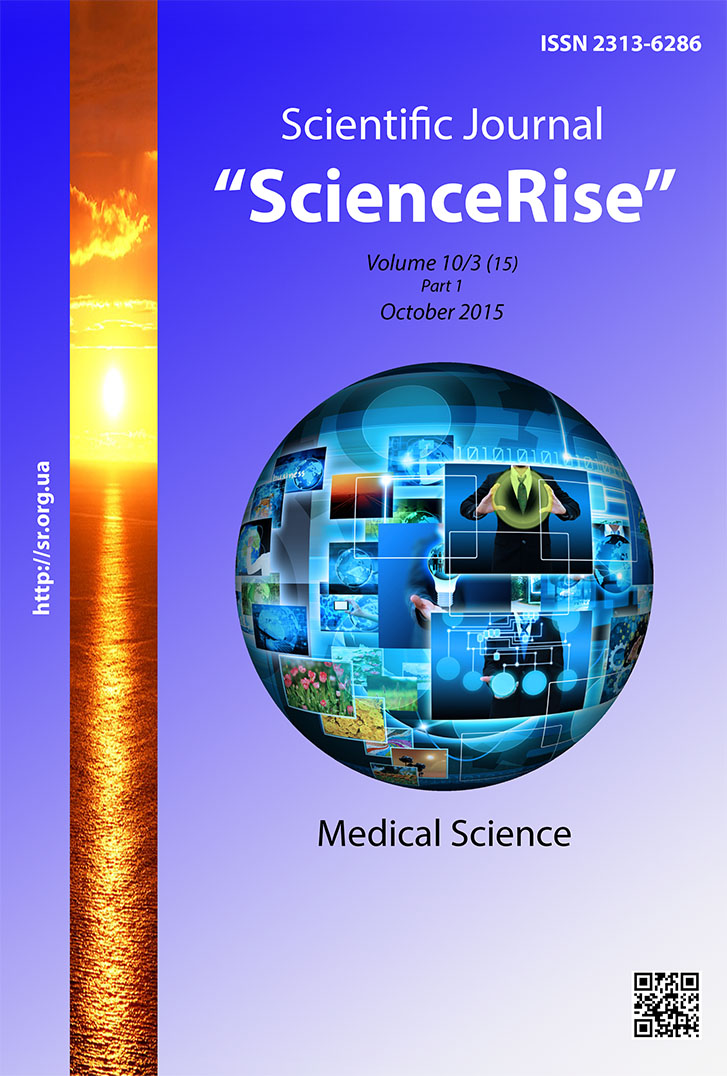Пріоритетність хірургічних методик лікування повношарових дефектів хряща колінного суглоба
DOI :
https://doi.org/10.15587/2313-8416.2015.51246Mots-clés :
глибока тунелізація, хондромаляція, суглобовий хрящ, дефект хряща, кістково-мозкова порожнинаRésumé
Проведений порівняльний аналіз результатів лікування пацієнтів з повношаровими дефектами хряща колінного суглоба шляхом мікрофрактуризації дна хрящового дефекту, підхрящовоїтунелізації зони дефекту та запропонованою методикою глибокої тунелізації дна дефекту до кістково-мозкової порожнини.
Виражений клінічний ефект отриманий при використанні запропонованої методики, де співвідношення добрих та задовільних результатів в пізніші терміни залишаються незмінними
Références
Korzh, N. A., Golovaha, M. L., Orljanskij, V. (2013). Povrezhdenie hrjashha kolennogo sustava. Zaporozhe: «Prosvіta», 126.
Herrlin, S. V., Wange, P. O., Lapidus, G., Hållander, M., Werner, S., Weidenhielm, L. (2012). Is arthroscopic surgery beneficial in treating non-traumatic, degenerative medial meniscal tears? A five year follow-up. Knee Surg Sports Traumatol Arthrosc, 21 (2), 358–364. doi: 10.1007/s00167-012-1960-3
Sihvonen, R., Paavola, M., Malmivaara, A., Itälä, A., Joukainen, A., Nurmi, H. et. al. (2013). Arthroscopic Partial Meniscectomy versus Sham Surgery for a Degenerative Meniscal Tear. New England Journal of Medicine, 369 (26), 2515–2524. doi: 10.1056/nejmoa1305189
Anetzberger, H., Mayer, A., Glaser, C., Lorenz, S., Birkenmaier, C., Müller-Gerbl, M. (2012). Meniscectomy leads to early changes in the mineralization distribution of subchondral bone plate. Knee Surg Sports Traumatol Arthrosc, 22 (1), 112–119. doi: 10.1007/s00167-012-2297-7
Zazirnyj, I. M., Jevsjejenko, V. G. (2010). Hirurgichne likuvannja defektiv hrjashha kolinnogo sugloba. Kyiv: Zdorov΄ja, 176.
Jejsmont, O. L., Skakun, P. G., Borisov, A. V. et. al. (2008). Sovremennye vozmozhnosti i perspektivy hirurgicheskogo lechenija povrezhdenij i zabolevanij sustavnogo hrjashha. Medicinskie novosti, 7, 12–19.
Zakirova, A. R. (2010). Artroskopicheskoe lechenie hrjashhevyh defektov kolennogo sustava (klinicheskoe issledovanie. Moscow, 19.
Malanin, D. A., Pisarev, V. B., Chrezov, L. L. et. al (2000). Plastika polnoslojnyh defektov pokrovnogo hrjashha kolennogo sustava cilindricheskimi kostno-hrjashhevymi auto- i allotransplantatami malogo razmera. Vestnik travmatologii i ortopedii im. N. N. Priorova, 2, 16–22.
Grigorovskij, V. V., Strafun, S. S., Kostogryz, O. A. et. al (2012). Patomorfologicheskie izmenenija i ishod travmaticheskogo defekta sustavnoj poverhnosti myshhelka bedrennoj kosti v uslovijah implantacii v jeksperimente autogennyh hondrocitov suspenzii ehvivo. Ortopedija, travmatologija i protezirovanie, 4, 30–39.
Petrenko, A. Ju., Hunov, Ju. A., Ivanov, Je. N. (2011). Stvolovye kletki. Svojstva i perspektivy klinicheskogo primenenija. Lugansk: OOO «Press Jekspress», 368.
Litovchenko, A. V. (2015). Reparatyvna metodyka hirurgichnogo likuvannja defektiv hrjashha kolinnogo sugloba. Mizhnarodnyj medychnyj zhurnal, 21 (2), 52–55.
Ishenin, Ju. M. (2010). Doktrina mehanicheskoj tunnelizacii. Vestnik klinicheskoj mediciny, 3 (2), 51–54.
Eroshkin, S. N. (2012). Vozmozhnosti revaskuljarizirujushhej osteotrepanacii v kompleksnom lechenii gnojnonekroticheskih form sindroma diabeticheskoj stopy. Novosti hirurgii, 5, 57–61.
Brittberg, M., Aglietti, P., Gambardella, R. et. al. International Cartilage Repair Society ICRS. ICRS 2005а. Available at: http://www.cartilage.org
Lysholm, J., Gillquist, J. (1982). Evaluation of knee ligament surgery results with special emphasis on use of a scoring scale. The American Journal of Sports Medicine, 10 (3), 150–154. doi: 10.1177/036354658201000306
Téléchargements
Publié-e
Numéro
Rubrique
Licence
(c) Tous droits réservés Андрій Вікторович Літовченко, Микола Іванович Березка, Максим Олегович Гуліда, Євгеній Владиславович Гарячий 2015

Cette œuvre est sous licence Creative Commons Attribution 4.0 International.
Our journal abides by the Creative Commons CC BY copyright rights and permissions for open access journals.
Authors, who are published in this journal, agree to the following conditions:
1. The authors reserve the right to authorship of the work and pass the first publication right of this work to the journal under the terms of a Creative Commons CC BY, which allows others to freely distribute the published research with the obligatory reference to the authors of the original work and the first publication of the work in this journal.
2. The authors have the right to conclude separate supplement agreements that relate to non-exclusive work distribution in the form in which it has been published by the journal (for example, to upload the work to the online storage of the journal or publish it as part of a monograph), provided that the reference to the first publication of the work in this journal is included.

